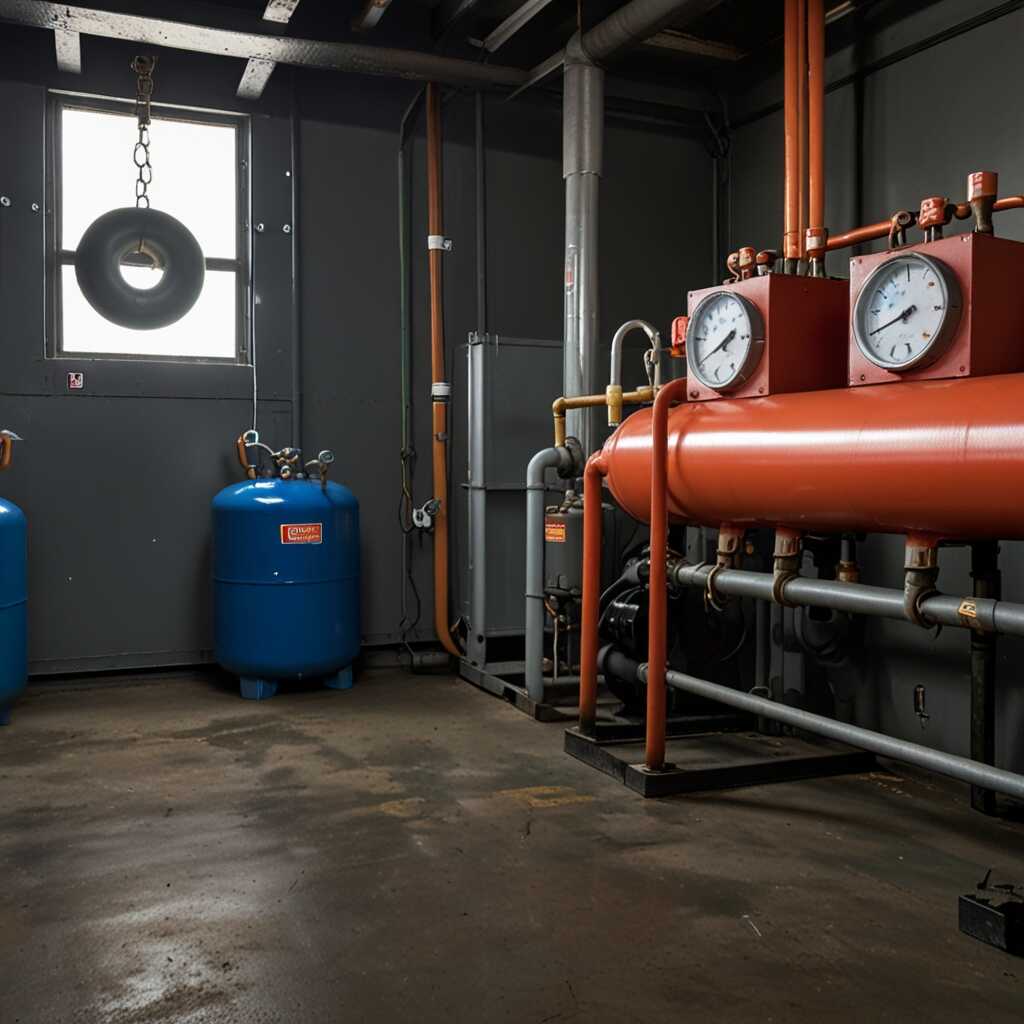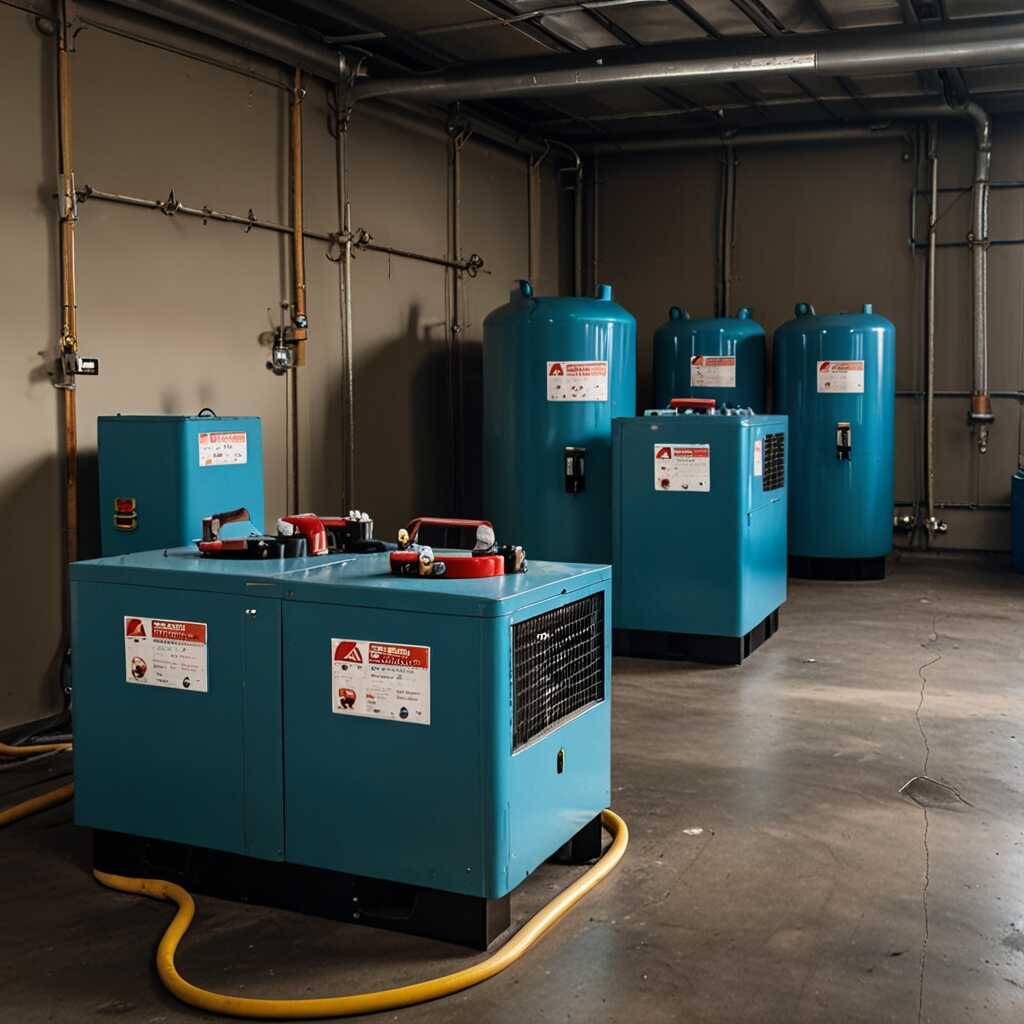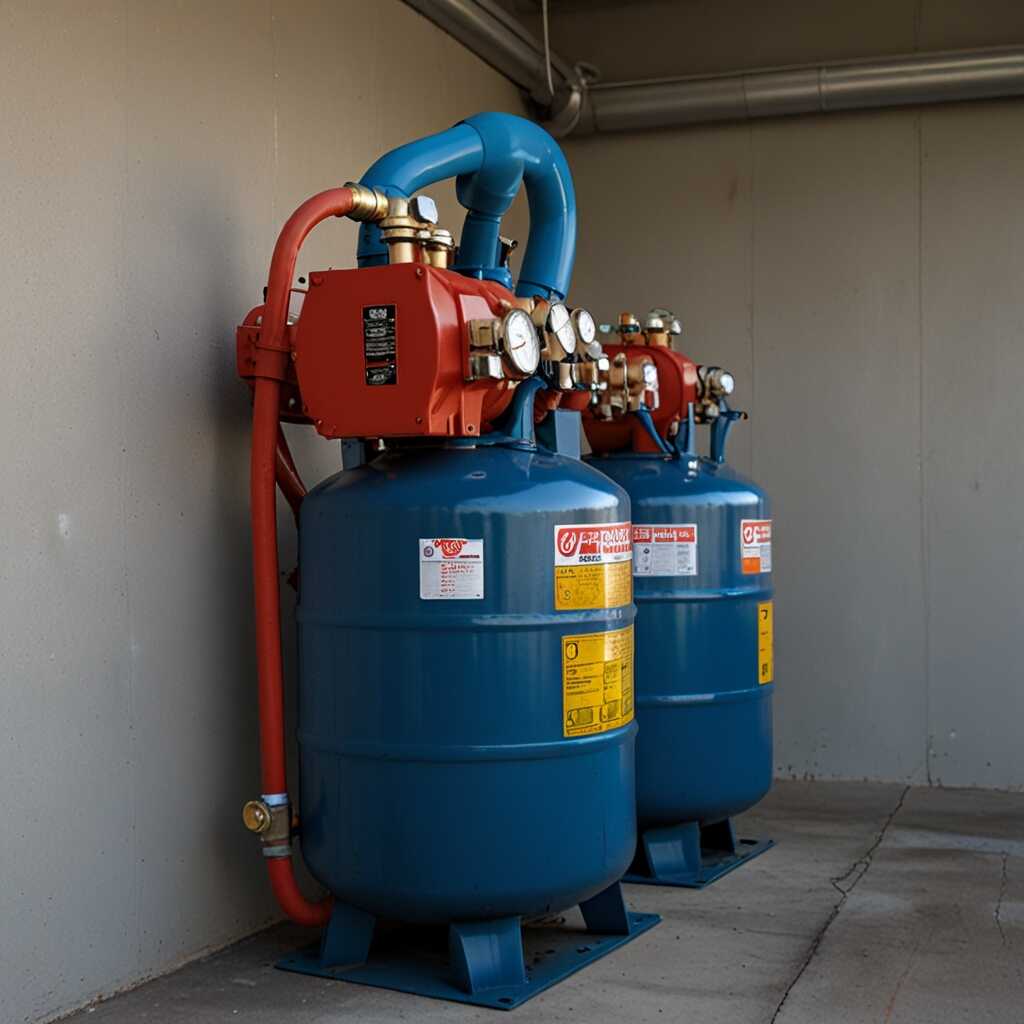Isolation solenoids are essential components that enhance refrigerant recovery machines and prevent backflow during HVAC operations. These devices ensure that refrigerants are safely extracted and managed, minimizing risks related to leaks or contamination. Understanding how isolation solenoids function is crucial for HVAC technicians and refrigerant recovery specialists. At Refrigerant Recovery Pro, we provide expert guidance on these systems, promoting safe and effective refrigerant management in varying HVAC applications.
Overview of Refrigerant Recovery Machines in HVAC Systems
Refrigerant recovery machines are essential devices in HVAC systems. They help recover refrigerants during service or disposal activities. These machines ensure that harmful refrigerants do not escape into the atmosphere. This promotes energy efficiency by allowing systems to operate optimally using minimal refrigerant. The effective use of refrigerant recovery machines also enhances environmental safety by preventing ozone layer damage. Typically, these machines can recover around 90-95% of the refrigerants in a system.
Benefits of using Refrigerant Recovery Machines
Using refrigerant recovery machines brings significant benefits to HVAC professionals. These machines are designed to maximize refrigerant recovery while maintaining HVAC systems’ operational efficiency. They offer features such as automatic shut-off, high recovery rates, and easy portability. This reliability makes them an essential part of refrigerant management practices. Additionally, many models undergo rigorous testing to ensure they meet industry standards. Regular reviews and comparisons between different brands help technicians select machines that deliver the best performance for their specific needs.
Understanding Isolation Solenoids in Recovery Systems
Isolation solenoids are critical components in refrigerant recovery systems. They function by controlling refrigerant flow, ensuring that it moves in the desired direction. This capability helps to prevent backflow, which can contaminate the system and compromise its reliability. Isolation solenoids create a secure seal that maintains pressure and system integrity. The essential role of these solenoids is to enhance safety and efficiency in refrigerant management.
Connection with Other Essential Components
Isolation solenoids work in conjunction with various components such as compressors, receivers, and service ports in refrigerant recovery systems. Each of these components plays a significant role in the overall performance and efficiency of the HVAC system. The solenoids’ ability to interface with these parts ensures that refrigerants are recovered efficiently and safely. Understanding the interactions between isolation solenoids and these components is crucial for HVAC technicians aiming to maintain and troubleshoot systems effectively.

Consequences of Backflow in Refrigerant Recovery
Backflow in refrigerant recovery systems poses significant risks, including equipment failure and environmental hazards. Backflow can cause refrigerant contaminants to enter the system, leading to costly repairs and compromised operational efficiency. Backflow prevention systems enhance reliability and safety by stopping the reverse flow of refrigerant, ensuring only clean, recoverable gas enters the system. According to industry research, approximately 30% of refrigerant recovery equipment failures are caused by backflow incidents. Proper backflow prevention is essential for HVAC professionals aiming to maintain system performance and integrity.
Understanding Backflow Prevention Mechanisms
Backflow prevention mechanisms are designed to enhance the safety and reliability of refrigerant recovery systems. These systems include isolation solenoids that automatically close off the refrigerant flow during reverse pressure scenarios. This design prevents hazardous refrigerants from leaking back into the system, which can lead to equipment damage and potential environmental risks. Regular testing of these backflow prevention mechanisms is essential to ensure they are functioning correctly. By providing expert guidance on these mechanisms, Refrigerant Recovery Pro helps HVAC professionals ensure their systems remain compliant with all regulatory requirements while optimizing performance.
Key Numerical Insights into Solenoid Systems
- Recovery machines can achieve up to 90% of refrigerant recovery efficiency.
- Isolation solenoids can prevent backflow in systems with pressures up to 600 PSI.
- Over 50% of HVAC professionals report improved safety with solenoid installations.
- Isolation solenoids can increase recovery speed by approximately 25%.
- These systems usually only weigh around 5 to 10 pounds, making them easy to handle.
- Studies show that refrigerant leaks can be reduced by 30% with backflow prevention systems.
- A properly installed isolation solenoid can last over 10 years with minimal maintenance.

Mechanics of Backflow Prevention with Isolation Solenoids
Isolation solenoids play a crucial role in preventing backflow during refrigerant recovery. They act as one-way valves that allow refrigerant to flow in one direction while blocking reverse flow. The operation of these solenoids enhances the overall efficiency of refrigerant recovery machines by ensuring that recovered refrigerants do not return to the evaporator or compressor systems. This functionality is essential to maintain the performance of HVAC systems, especially during maintenance tasks. When tested, isolation solenoids offer reliable response times, typically measuring in milliseconds, which further ensures optimal system performance and safety.
Importance of Reliability in Isolation Solenoids
Reliability in isolation solenoids is vital for effective refrigerant management. HVAC technicians rely on these components to prevent costly refrigerant leaks. Durable isolation solenoids deliver proven performance when integrated into refrigerant recovery machines. They are designed to withstand high pressures and varying temperatures, ensuring they function reliably under different conditions. Proper testing of isolation solenoids guarantees that they maintain effective backflow prevention. Regular reviews and comparisons of solenoid performance can help technicians choose the best components for their specific needs. This focus on reliability enhances overall HVAC system efficiency and helps comply with environmental regulations.

Advantages of Recovery Machines with Isolation Solenoids
Recovery machines that include isolation solenoids provide several key benefits. They significantly enhance safety by preventing backflow during refrigerant recovery processes. This design feature reduces hazardous leaks and ensures compliance with environmental regulations. Furthermore, these machines provide greater operational efficiency. They quickly process refrigerants by allowing technicians to isolate systems securely. This topping efficiency could lead to reduced labor costs and faster service times. The longevity of recovery machines with isolation solenoids averages over ten years, making them a durable investment for HVAC professionals.
Safety Enhancements from Isolation Solenoids
Isolation solenoids deliver critical safety enhancements in refrigerant recovery machines. They minimize the risk of refrigerant backflow, which can lead to system contamination or hazardous leaks. These solenoids are engineered to maintain pressure and control refrigerant flow accurately. This functionality supports secure recovery operations. By deploying isolation solenoids, technicians can work with confidence, knowing their tools are reliable and effective. This reliability becomes especially crucial in emergency scenarios where quick responses are needed. Incorporating these features into refrigerant recovery machines ultimately improves safety performance in HVAC applications.
Advantages of Utilizing Valve Mechanisms
- They ensure efficient recovery by stopping the unintended flow of refrigerants.
- Isolation solenoids enhance safety by significantly reducing the risk of leaks.
- These components help improve the longevity of refrigerant recovery equipment.
- Backflow prevention increases compliance with environmental regulations.
- They facilitate quicker system evacuations, saving time for technicians.
- Isolation solenoids offer enhanced control over pressure levels in HVAC systems.
- They contribute to better refrigerant management practices among professionals.

Key Maintenance Practices for Recovery Machines
Essential maintenance practices for refrigerant recovery machines focus on routine performance checks. Inspect isolation solenoids for clogs and leaks to ensure reliable operation. Each solenoid should be cleaned and tested regularly. Checking mechanical connections and electrical components enhances efficiency. Users should review equipment manuals for specific guidelines. Components such as filters, hoses, and valves need close attention. Using proven maintenance procedures improves equipment lifespan and performance. Testing isolation solenoids every six months can help identify issues early.
Regular Testing and Inspection of Isolation Solenoids
Regular testing of isolation solenoids is vital for effective operation. Technicians should inspect the solenoid valve for signs of wear every quarter. A well-maintained solenoid must show no leaks. Testing pressure helps confirm that the solenoid can handle refrigerant without backflow. HVAC professionals recommend conducting a leak test every three months. Keeping up with routine inspections ensures reliable performance and prevents costly repairs. Refrigerant Recovery Pro provides useful resources on best inspection practices to enhance your maintenance routine.
Navigating Regulatory Requirements for Refrigerant Recovery
Key regulatory standards for refrigerant recovery include EPA regulations that mandate specific recovery techniques to prevent emissions. Isolation solenoids play a crucial role in ensuring compliance by providing reliable backflow prevention. This technology helps protect the environment and meets legal responsibilities concerning refrigerant management. Organizations such as the EPA and local state agencies govern these regulations. Recovering all refrigerant, typically around 90% of the total in the system, ensures full compliance before disposal.
Understanding the Role of Isolation Solenoids in Compliance
Isolation solenoids enhance regulatory compliance by preventing backflow during refrigerant recovery processes. These devices are designed to prevent refrigerants from re-entering the system, thereby ensuring that all refrigerant is captured effectively. This feature is essential for maintaining the efficiency of refrigerant management practices. By integrating isolation solenoids into recovery machines, HVAC technicians can meet stringent EPA regulations and safeguard against possible violations. High-quality isolation solenoids provide the durability and reliability needed for consistent performance during refrigerant recovery.
Comparative Insights on Relevant Brands and Use Cases
- Brand X offers high performance but can be pricey for smaller businesses.
- Brand Y is budget-friendly, but it may lack advanced features for professionals.
- Brand Z provides great durability, making it ideal for long-term projects.
- Many HVAC technicians prefer models that integrate easily with existing systems.
- DIY enthusiasts appreciate user-friendly instructional materials offered by several brands.
- Environmental regulators favor equipment that meets strict compliance standards.
- New HVAC students benefit from affordable options that don’t compromise quality.
Future Trends in Refrigerant Recovery Technology
Isolation solenoids play a vital role in enhancing the reliability and efficiency of refrigerant recovery systems. They ensure backflow prevention within HVAC applications, safeguarding the integrity of refrigerant management processes. Anticipated advancements in refrigerant recovery technology focus on integrating smarter isolation solenoids with real-time monitoring capabilities. Major manufacturers, such as TopTech and SolidCool, are leading innovations in backflow prevention systems. These developments aim to improve system performance and regulatory compliance, ensuring a safer environment for HVAC technicians and businesses. The next major industry standard for refrigerant recovery is expected to be implemented by 2025, driving further enhancements in safety and system capabilities.
Innovations in Backflow Prevention Systems
Innovations in backflow prevention systems are crucial for the safe operation of refrigerant recovery processes. New technologies include more durable isolation solenoids designed to withstand high pressures and temperature fluctuations. These advancements not only increase system reliability but also enhance performance during refrigerant recovery operations. Smart features allow these solenoids to provide data on operating status and system conditions. The integration of AI in monitoring systems will lead to predictive maintenance, preventing failures before they affect performance. By adopting these innovations, HVAC professionals can stay compliant with upcoming regulations and improve their refrigerant handling practices significantly.